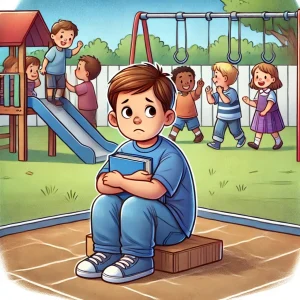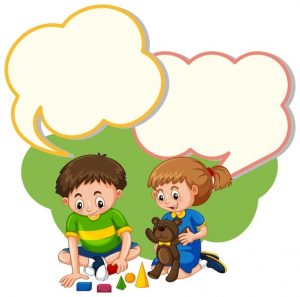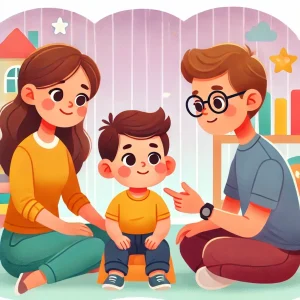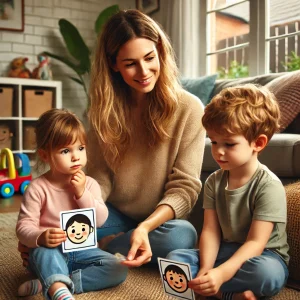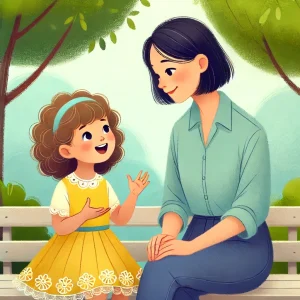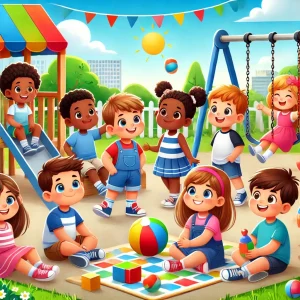Mastering Velar Sounds in Children: A Parent’s Guide
By Rajini D
Last Updated: March 9, 2024
Velar sounds are essential elements in language development, especially in children. These sounds are produced using the back part of the tongue against the soft palate (or velum). Common velar sounds in English include /k/, /g/, and /ŋ/, as in “cat”, “go”, and “sing”, respectively. Mastery of these sounds typically occurs in children around the ages of 3 to 4 years old. Their proper development is vital for clear speech and language skills.
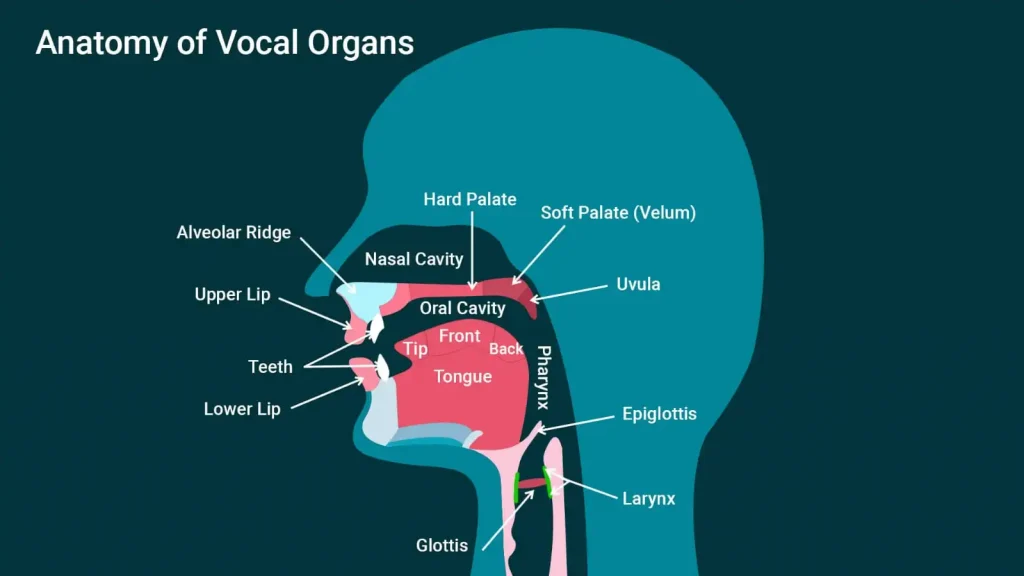
Book Free Speech Therapy Consultation.
Understanding Velar Sounds
Defining Velar Sounds:
Velar sounds are articulated by the back of the tongue, making contact with the soft palate. They are crucial in many languages and form a significant part of speech development. The sounds /k/, /g/, and /ŋ/ are primary examples. Each of these sounds has distinct features:
- /k/ is a voiceless sound produced without vocal cord vibration.
- /g/ is its voiced counterpart, produced with vocal cord vibration.
- /ŋ/, as in “sing,” is a nasal sound where the airflow is directed through the nose.
For more information on speech and language milestones, check out our detailed guide.
Techniques for Teaching Velar Sounds
Mastering velar sounds can be a rewarding process for both children and parents. Below are some effective techniques:
Also read: Teaching Your Toddler the /l/ Sound: A Step-by-Step Guide
Technique 1: Articulation Therapy Progression
Syllables to Words:
Begin with simple syllables like “ka,” “ke,” and “ki.” Gradually introduce more complex syllables and words, such as “cat,” “king,” and “go.”
Words to Sentences:
After mastering individual sounds and words, combine them into short sentences to enhance your speaking ability.
Also Read Home-Based Occupational Therapy Activities.
Technique 2: Tactile and Kinesthetic Cues
Physical Cues for Each Sound:
Help children understand how to position their tongue and use their breath for each sound. This can include guiding their tongue placement for the /k/ and /g/ sounds.
Technique 3: Visual and Auditory Support
Visual Articulation Cards:
Use visual aids showing the tongue and palate positions for each velar sound. This helps in understanding the physical production of the sounds.
Discover more about what to expect in speech and language development at these ages by reading about 2 to 3-year milestones and 3 to 4-year milestones.
Auditory Repetition Exercises:
Regular practice of these sounds in different contexts reinforces learning.
Read more: Mastering Alveolar Sounds in Children: A Parent’s Guide
Specific Practices for Each Velar Sound
The /k/ Sound
Teaching Steps:
- Lip Position: Teach the child to raise the back of their tongue towards the soft palate.
- Breath Control: Instruct them to release air sharply, creating the /k/ sound.
- Practice: Begin with the /k/ sound, then syllables like “ka”, “ke”, “ki”, and words like “cat”, “kick”, “back”.
The /g/ Sound
Teaching Steps:
- Voice Vibration: Unlike /k/, /g/ is voiced. Teach the child to feel the vibration in their throat.
- Lip Position: Similar tongue positioning as /k/ but with vocal cord vibration.
- Comparison with /k/: Demonstrate the difference between the two sounds.
The /ŋ/ Sound
Teaching Steps:
- Nasal Quality: Explain that the sound resonates in the nose.
- Tongue Position: The back of the tongue raises to touch the velum.
- Humming: Start with humming to feel the nasal vibration, then transition to /ŋ/ sounds in words like “sing” and “ring.“
If your child is on the autism spectrum and experiencing speech delays or atypical phonological processes, learn about our Speech Therapy for Autism.
Advanced Practice and Word Lists
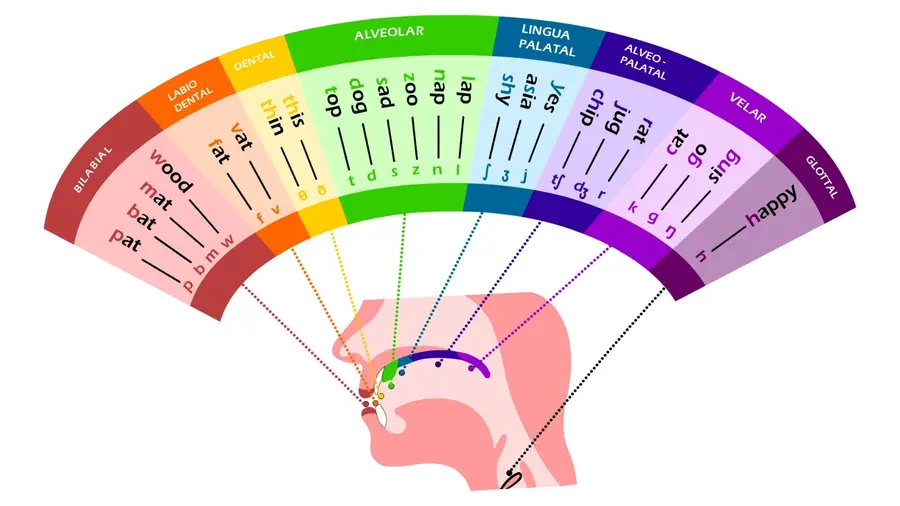
For each sound, provide word lists that practice the sound in initial, final, and medial positions. Include a variety of words ranging from simple CVC (Consonant-Vowel-Consonant) words to more complex structures. For example:
The /k/ Sound:
- Syllable Combinations: Practice combining /k/ with various vowels – ka, ke, ki, ko, ku.
- Drills: Practice with pairs like “cat-gat”, “keel-geel”, “kite-bite” to distinguish /k/ from /g/ and /b/.
- Word List for /k/ sound: Practice the/k/ sound in the Initial, Final, and Medial positions of a word.
Word List for /k/ sound:
/k/ Sound in the Initial Position of a Word
CVC Words
- ‘a’ vowel: Cat, cap, can, cab, cast, cash, catch
- ‘e’ vowel: Keg, ken, keel, kept, kest, kelp, keck
- ‘i’ vowel: Kit, kin, kid, kiss, kick, kill, kilt
- ‘o’ vowel: Cot, cop, cob, con, comb, cost, colt
- ‘u’ vowel: Cut, cup, cub, cud, cuff, cull, curb
More Complex Syllable Structures
- CVCC: Crisp, clasp, click, clink, clock, clump, crumb
- CCVC: Crack, crank, crest, clung, clang, crypt, crass
- CVVC: Creek, cloak, croon, crane, croak, cleat, cloak
Additional Words
- Varied syllables: Connect, combine, correct, kinetic, create, capture, kinetic
/k/ Sound in Final Position of a Word
CVC Words
- ‘a’ vowel: Rack, sack, back, tack, lack, pack, jack
- ‘e’ vowel: Reck, peck, neck, deck, heck, leck, speck
- ‘i’ vowel: Rick, sick, kick, lick, pick, tick, thick
- ‘o’ vowel: Rock, sock, lock, dock, mock, tock, knock
- ‘u’ vowel: Ruck, suck, buck, tuck, luck, puck, duck
More Complex Syllable Structures
- CVCC: Crank, plank, stick, stock, brick, track, flock
- CCVC: Flask, pluck, snack, truck, crack, block, thwack
- CVVC: Beak, peak, soak, cloak, fluke, steak, croak
Additional Words
- Varied syllables: Backpack, livestock, shipwreck, haycock, deadlock, artwork, peacock
/k/ Sound in the Medial Position of a Word
CVC Words
- ‘a’ vowel: Racket, packet, backer, tacker, lackey, hacker, jacket
- ‘e’ vowel: Reckon, pecker, speckle, necktie, checker, recking, decker
- ‘i’ vowel: Picket, ticket, cricket, thicket, wicket, sickly, picky
- ‘o’ vowel: Rocket, socket, locket, pocket, cocker, rocker, blocker
- ‘u’ vowel: Bucket, tucker, sucker, ruckus, puckish, lucky, trucker
More Complex Syllable Structures
- CVCC: Bucket, racket, pocket, socket, thicket, rocket, locket
- CCVC: Tackle, pickle, buckle, knuckle, tackle, speckle, freckle
- CVVC: Aching, echoing, ticking, locking, leaking, baking, looking
Additional Words
- Varied syllables: Background, kitchen, blacksmith, ticketing, mockingbird, skyrocket, backpacker
The /g/ Sound:
- Syllable Combinations: Practice combining /g/ with various vowels – ga, ge, gi, go, gu.
- Drills: Practice with pairs like “gate-date,” “geese-deese,” and “gill-dill” to distinguish /g/ from /d/.
- Word List for /g/ sound: Practice /g/ sound in Initial, Final and Medial position of a word.
Word List for /g/ sound:
/g/ Sound in the Initial Position of a Word
CVC Words
- ‘a’ vowel: Gad, gag, gap, gas, gash, gal, gat
- ‘e’ vowel: Ged, get, gem, keg, gel, gest, gelt
- ‘i’ vowel: Gid, gig, gill, gin, gip, gild, gift
- ‘o’ vowel: God, got, gob, gong, gone, golf, gosh
- ‘u’ vowel: Gud, gull, gun, gum, gush, gulf, gust
More Complex Syllable Structures
- CVCC: Glimp, glint, grist, grunt, gland, glomp, grump
- CCVC: Grunt, gloat, green, grope, grime, grove, group
- CVVC: Glean, groove, grain, groom, groan, glide, gloom
Additional Words
- Varied syllables: Galaxy, gesture, gorilla, glisten, gourmet, gravity, gregarious
/g/ Sound in Final Position of a Word
CVC Words
- ‘a’ vowel: Bag, lag, nag, rag, tag, wag, snag
- ‘e’ vowel: Beg, keg, leg, peg, reg, seg, meg
- ‘i’ vowel: Big, dig, fig, jig, pig, rig, twig
- ‘o’ vowel: Bog, dog, fog, hog, jog, log, tog
- ‘u’ vowel: Bug, dug, hug, lug, mug, rug, tug
More Complex Syllable Structures
- CVCC: Brag, drag, flag, snag, stag, swag, crag
- CCVC: Brag, drug, plug, slug, smug, snug, thug
- CVVC: Beige, gauge, rogue, vogue, league, segue, vague
Additional Words
- Varied syllables: Dialogue, monologue, catalogue, epilogue, synagogue, demagogue, pedagogue
/g/ Sound in the Medial Position of a Word
CVC Words
- ‘a’ vowel: Agate, bagel, legal, maggot, ragged, saggy, tagger
- ‘e’ vowel: Eager, legend, regent, segment, veggie, kegler, ledger
- ‘i’ vowel: Giggle, bigamy, rigid, wiggle, jigsaw, niggle, zigzag
- ‘o’ vowel: Goggle, dogma, foggy, logged, noggin, toggle, yoghurt
- ‘u’ vowel: Guggle, bugger, dugout, nugget, rugged, sugary, tugboat
More Complex Syllable Structures
- CVCC: Fugitive, gigantic, legible, magnify, ragtime, suggest, wigwam
- CCVC: Gigantic, magnify, rigging, tagging, lagging, nuggets, juggler
- CVVC: Agony, egoist, igloo, ogling, uglier, egest, augment
Additional Words
- Varied syllables: Aggregate, navigate, egregious, magnolia, regalia, staggering, burgeoning
The /ng/ Sound:
It’s important to note that the /ng/ sound commonly appears in the final and medial positions in English words, but it is rare in the initial position. Therefore, I’ll focus on the final and medial positions:
- Syllable Combinations: Practice combining /ng/ with various vowels – nga, nge, ngi, ngo, ngu.
- Drills: Practice with pairs like “singer-zinger”, “longer-loner”, “hanger-haner” to distinguish /ng/ from similar sounds.
- Word List for /ng/ sound: Practice /ng/ sound in Initial, Final and Medial position of a word.
Word List for /ng/ sound:
/ng/ Sound in Final Position of a Word
CVC Words
- ‘a’ vowel: Bang, fang, hang, rang, sang, tang, pang
- ‘e’ vowel: Beng, leng, heng, meng, peng, teng, zeng (Note: These may not be common English words, as /ng/ is rare after ‘e’ vowel)
- ‘i’ vowel: Bing, king, ring, sing, wing, zing, ping
- ‘o’ vowel: Bong, long, song, tong, gong, pong, kong
- ‘u’ vowel: Bung, hung, lung, rung, sung, tung, flung
More Complex Syllable Structures
- CVCC: Clang, fling, throng, stung, sprung, string, bling
- CCVC: Sling, wrong, clang, prong, swung, flung, throng
- CVVC: (Note: /ng/ rarely appears in this syllable structure in English)
Additional Words
- Varied syllables: Among, belong, prolong, singalong, clanging, thronging, strongman
/ng/ Sound in the Medial Position of a Word
CVC Words
- ‘a’ vowel: Anger, angle, angst, bangs, manger, fangirl, tangle
- ‘e’ vowel: Engage, engine, bungle, longer, sponger, linger, finger
- ‘i’ vowel: Singing, ringing, bringing, flinging, stinging, zinging, winging
- ‘o’ vowel: Ongoing, bongo, tongs, longish, stronghold, belong, prolong
- ‘u’ vowel: Ungulate, bungler, hunger, lungful, youngish, unguent, fungus
More Complex Syllable Structures
- CVCC: Mangled, jangled, tangled, wrangled, bungled, strangled, angled
- CCVC: Anguish, English, languish, penguin, anguish, jangling, lunging
- CVVC: (Note: /ng/ is also rare in this syllable structure in English)
Additional Words
- Varied syllables: Singapore, anguished, longitude, wrangling, enlighten, singer, younger
Learn more about Autism Spectrum Disorder and its therapies.
Explore our dedicated autism treatment centre in Hyderabad for comprehensive care.
Using Books and Everyday Activities
Select books rich in velar sounds and integrate these sounds into daily activities. Emphasize and repeat the velar sounds in a fun and engaging way. For example:
Book Recommendations by Sound:
| Sound | Book Title | Key Words |
|---|---|---|
| /p/ | “The Very Hungry Caterpillar” by Eric Carle “Kangaroo Kangaroo, What Do You See?” | caterpillar, cake Kangaroo |
| /b/ | “Go, Dog. Go!” by P.D. Eastman | go, dog |
| /m/ | “Where the Wild Things Are” by Maurice Sendak | king, thing |
Conclusion
Understanding and mastering velar sounds is crucial for a child’s language development. Recognizing the typical age for mastering these sounds and identifying any challenges early can lead to effective support. This comprehensive approach ensures a robust foundation for language skills.
Discover the benefits and features of our online speech therapy services.
For insights into how online speech therapy can support your toddler’s development, visit our article on Understanding Online Speech Therapy for Toddlers.
Frequently Asked Questions (FAQs)
1. What are velar sounds, and why are they important?
Velar sounds, including /k/, /g/, and /ŋ/, are articulated with the back of the tongue against the soft palate. They’re crucial for clear speech and language development in children.
2. At what age should a child master velar sounds?
Children typically start mastering velar sounds around the ages of 3 to 4. However, this can vary, and some children may take longer to develop these sounds.
3. How can I tell if my child is having difficulty with velar sounds?
Difficulty with velar sounds might be evident if your child consistently substitutes other sounds for /k/, /g/, and /ŋ/ (e.g., saying “tup” instead of “cup”) or omits these sounds altogether.
4. What are some effective techniques to teach velar sounds?
Techniques include articulation therapy progression (from syllables to words), tactile and kinesthetic cues for sound production, and using visual and auditory support like articulation cards and repetition exercises.
5. Are there specific activities or tools that can help with practicing velar sounds?
Engaging children with books that emphasize velar sounds, daily articulation practice, and using visual aids such as pictures showing tongue placement can be effective.
6. Should I seek professional help if my child struggles with velar sounds?
If your child shows persistent difficulty with velar sounds beyond the typical age range, it may be beneficial to consult a speech-language pathologist for personalized guidance and support.
7. Can mastering velar sounds impact a child’s overall language development?
Yes, mastering velar sounds is an integral part of overall speech clarity and language development. It helps in forming clear words and contributes to effective communication skills.
8. Are there any common misconceptions about teaching velar sounds?
A common misconception is that children will automatically ‘grow out’ of speech difficulties. Early intervention and practice are key to mastering these sounds.
Also read: “Navigating Online Speech Therapy for Non-Verbal Children: A Guide for Parents and Educators” for a comprehensive guide on managing communication issues in children.
About the Author:
Rajini Darugupally
M.Sc., Speech-Language Pathologist (9+ years of experience)
Rajini is a passionate and dedicated Speech-Language Pathologist with over 9+ years of experience, specializing in both developmental speech and language disorders in children and rehabilitation in adults. Driven by a desire to empower each individual to find their voice, Rajini brings a wealth of experience and a warm, genuine approach to therapy.
Currently, at Wellness Hub, she thrives in a team environment that values innovation, compassion, and achieving results for their clients.
Connect with Rajini to learn more about how she can help you or your loved one find their voice.
Book your Free Consultation Today
Parent/Caregiver Info:
Client’s Details:
* Error Message
